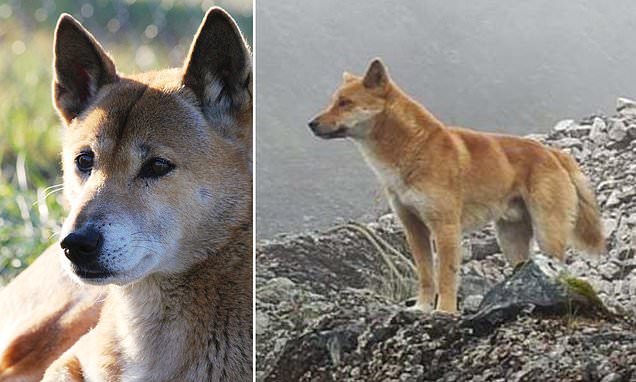We have great news for you. New Guinea singing dogs are making their way back. Yes, you have read it right! This amazing dog breed was believed to only exist in captivity. And 50 years back, the singing dog breed had gone totally extinct. But it is not true as scientists have spotted a pack of New Guinea singing dogs.
When this similar looking dog breed was found in Indonesia in 2016, scientists thought of doing research. So in 2018, they collected the DNA samples of the dog who were in captivity and the results were amazing. It has been found that New Guinea singing dogs are the predecessor of the Highland Wild Dogs. Before this test, New Guinea singing dogs were believed to be the most ancient dog breed. But now, Highland Wild Dogs holds that title.

The New Guinea singing dog, known for making harmonic sounds with its high-pitched barks and howls, was believed to only exist in captivity – until now. Scientists spotted a pack of these dogs running wild in the hills of Indonesia after the animals were believed to be extinct 50 years ago
The unique New Guinea singing dog (NGSD) first came to limelight in 1897. Back then, this dog breed has got so much attention because of its unique and characteristic vocalization that experts describe as ‘wolf howl with overtones of whale song.’
Right now, there are not more than 300 dogs left and they are currently living in conversation centers. Since the dogs have not lived in the wild from the 1970s and are inbred several times, they have lost most of their genetic makeup.
Elaine Ostrander, Ph.D., NIH Distinguished Investigator and senior author of the paper, said: ‘The New Guinea singing dog that we know of today is a breed that was basically created by people.’ He further says that ‘Eight were brought to the United States from the Highlands of New Guinea and bred with each other to create this group.’


The findings were uncovered following comparison of DNA from canines observed in the wild back in 2018 with those in captivity, revealing the New Guinea singing dog (pictured) is the predecessor of the Highland Wild Dogs

In 2016 a team from the University of Papua traveled to Puncak Jaya, a mountain summit in Papua, Indonesia where they spotted 15 Highland Wild Dogs (pictured) near the largest gold mine in the world that looked very similar to the NGSD
For so many years, scientists and researchers believed that New Guinea singing dogs no longer exist. It was because this dog breed had lost its habitat and been extensively bred as a house pet.
But luckily, it was not true because back in 2016, when a team of experts from the University of Papua traveled to Puncak Jaya, they found NGSD. What happened was that the professionals were in Indonesia and there they had spotted 15 Highland Wild Dogs. These dogs were near the largest gold mine in the world. When the experts saw the dog, they thought it was NGSD.
After spotting the dogs, the team of researchers then clicked so many pictures of the wild dog in different colors: ginger, cream, and roan, and black with white markings. In the pictures, they captured adults of both sexes, pregnant females, and pups ranging in age from about three to five months.
The team returned to Indonesia again in 2018 to collect the blood samples from three of the canines. Heidi Parker, Ph.D., who led the genomic analyses, said: ‘We found that New Guinea singing dogs and the Highland Wild Dogs have very similar genome sequences, much closer to each other than to any other canid known.’ He further said that ‘In the tree of life, this makes them much more related to each other than modern breeds such as German shepherds or basset hounds.’
From the result of the blood test, the team concluded that “Highland Wild Dogs have genome sequences that New Guinea singing dogs lost while in captivity.” The researchers believe that they can create a true New Guinea singing dog population.

The New Guinea singing dog (pictured) was first studied in 1897 and became known for their unique and characteristic vocalization

The team suggests that the Highland Wild Dogs (pictured) have genome sequences that New Guinea singing dogs lost while in captivity
This is only possible because of NHGRI’s commitment to promoting comparative genomics. This commitment allows the researchers to compare the genome sequences of a dozen other canid species with that of the Highland Wild Dog.
Highland Wild Dogs and New Guinea singing dogs, both are a part of the dog species Canis lupus familiaris. But according to research, it has been revealed that each of them has genomic variants across their genomes. And this thing does not exist in other dogs that we know today.
‘By getting to know these ancient, proto-dogs more, we will learn new facts about modern dog breeds and the history of dog domestication,’ Dr. Ostrander said. ‘After all, so much of what we learn about dogs reflects back on humans.’









